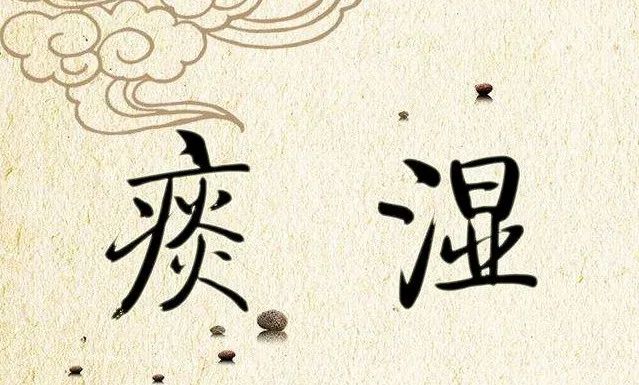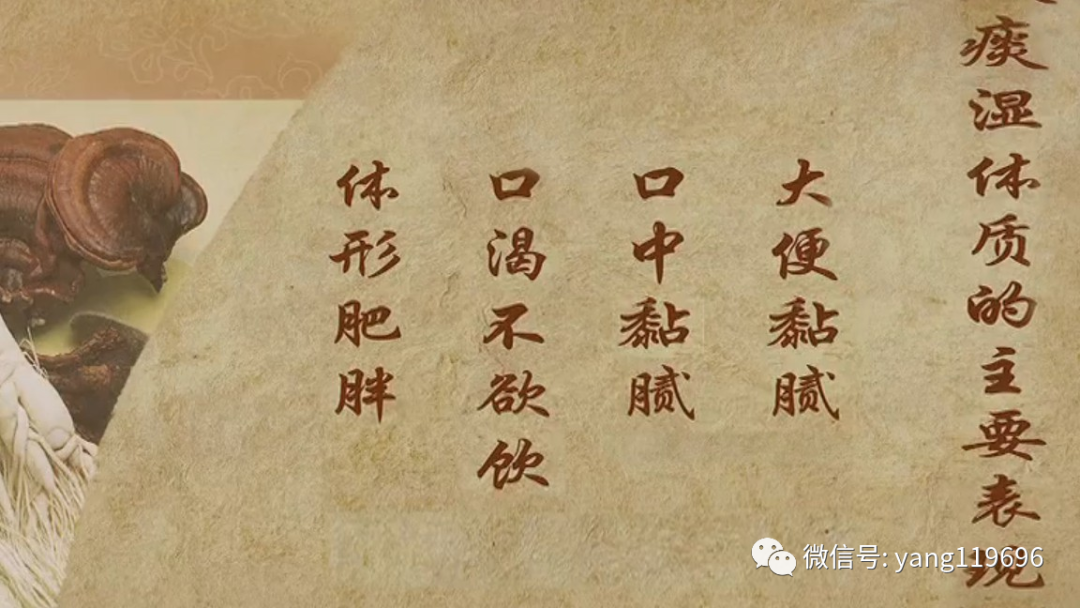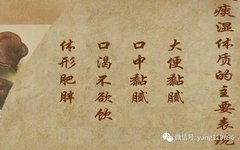
When it comes to phlegm, people might immediately think of the sticky substance that clogs the throat when coughing, or the saliva we spit out. In Traditional Chinese Medicine (TCM), phlegm is divided into two types—”visible phlegm” and “invisible phlegm.” “Visible phlegm” primarily exists in the lungs, which is the mucus secreted by the lungs and bronchi, also known as “external phlegm” that we commonly cough up. TCM states that the spleen is the source of phlegm, while the lungs are the storage for phlegm. Generally, healthy individuals have very little phlegm, as the body secretes a small amount of mucus to keep the respiratory tract moist. However, when we are ill, if there is inflammation in the respiratory tract or issues with the lungs, the respiratory tract will secrete more phlegm, and the nature of the phlegm can change from clear to yellow purulent phlegm.

Here, the phlegm-dampness we refer to actually indicates “invisible phlegm.” It exists within various tissues, organs, and blood in the body, and cannot be seen with the naked eye. Phlegm-dampness is caused by the stagnation of body fluids that do not transform, leading to the condensation of phlegm and dampness, characterized by its stickiness and heaviness. When the yin and yang of the body’s organs are imbalanced, and the movement of qi, blood, and body fluids is disrupted, phlegm-dampness is likely to form.
The production of phlegm-dampness is closely related to the functions of the lungs, spleen, and kidneys. TCM believes that “qi stagnation produces phlegm” and “spleen deficiency produces phlegm.” If the lungs fail to disperse and descend, and the body fluids fail to distribute, phlegm will accumulate; if the spleen is not functioning well, dampness will gather to form phlegm; if the kidneys are deficient and cannot control water, it will lead to phlegm. Among these three organs, the function of the spleen is the most important. The spleen governs transformation and transportation, which is the foundation of postnatal health. All the nutrients our body needs come from food. When we eat, food passes through the mouth, then is transported to the stomach, and must undergo the transformation by the spleen for the nutrients to be delivered to the five organs and six bowels, as well as the limbs and tissues. If the spleen is strong, the organs will be nourished with sufficient qi and blood; if the spleen’s function is weak, the food accumulated in the stomach cannot be transformed into nutrients for the body, and waste products cannot be expelled, leading to a mixture with body fluids that rots and ferments, resulting in phlegm-dampness. Excessive phlegm-dampness in the body can easily lead to coronary heart disease, stroke, hyperlipidemia, diabetes, and more. Phlegm-dampness can cause blood stasis, and when phlegm-dampness combines with blood stasis, it can lead to lumps, breast nodules, inflammatory masses, and other painful conditions. If not treated promptly, it can evolve into tumors, endangering our life.
Excessive phlegm-dampness can easily lead to obesity:
People with excessive phlegm-dampness tend to be overweight. The Yuan dynasty physician Zhu Danxi proposed the view that “fat and fair people often have phlegm-dampness.” The fat we commonly refer to is actually a form of phlegm-dampness. Fat is formed from the dirty parts of water and dampness accumulated in the body, exhibiting the characteristics of “phlegm”—filthy, sticky, and thick. Our bodies are originally slim and healthy, but if phlegm-dampness accumulates in the waist and abdomen, it feels as if a garbage bag is tied around the waist, making the body feel heavy and uncomfortable, and everything feels laborious.

Phlegm-dampness can lead to various diseases:
When phlegm-dampness accumulates and obstructs any part of the body, it will cause pain or discomfort in that area, becoming a new pathogenic factor. For example, if phlegm-dampness is in the blood vessels, it leads to blood flow stagnation, and the phlegm-dampness adhering to the vessel walls corresponds to what we commonly refer to as blood lipids and cholesterol; if phlegm-dampness is in the heart, it can obscure the heart orifices, causing confusion; if phlegm-dampness is in the spleen and stomach, it can obstruct the middle jiao, leading to nausea and loss of appetite; if phlegm-dampness is in the joints, it can lead to gout.
Individuals with excessive phlegm-dampness are very prone to diabetes. Due to the obstruction of the middle jiao (spleen and stomach) by phlegm-dampness, over time it can transform into heat, damaging the yin of the spleen and stomach, and then the heat pathogen can further damage the lung yin, eventually harming the kidney yin, leading to polyuria, at which point diabetes can develop. Phlegm-dampness can also easily lead to stroke. When phlegm-dampness obstructs the blood vessels, it affects blood circulation, causing slow blood flow, and some small blood vessels may even be blocked by phlegm-dampness, preventing blood from flowing, which can easily lead to cerebral thrombosis due to vascular obstruction. Phlegm-dampness is a viscous substance, and as it accumulates thicker and heavier on the vessel walls, it gradually reduces the elasticity of the vessels. When a person experiences unexpected stimulation, the inelastic vessels are prone to rupture, leading to cerebral hemorrhage and other strokes.
People with phlegm-dampness in the body often feel drowsy and fatigued without much exertion. This is because the phlegm-dampness obstructs the movement of qi, preventing the spleen from distributing the essence of food and fluids throughout the body, leading to deficiency of qi and blood in the five organs and six bowels, resulting in a series of symptoms such as drowsiness, fatigue, palpitations, chest tightness, shortness of breath, dizziness, lower back pain, and excessive sleepiness.

Dietary considerations for phlegm-dampness, focusing on strengthening the spleen:
To eliminate phlegm-dampness, one should avoid eating pork, fatty chicken, milk, sweets, tea, alcohol, and other foods that promote dampness and phlegm. Instead, focus on consuming foods that strengthen the spleen, eliminate dampness, and resolve phlegm, such as millet, pumpkin, white radish, water chestnut, seaweed, jellyfish, onion, coix seed (yi yi ren), red adzuki beans, fava beans, and cabbage.
Diet should be light, and it is best to avoid sweets, fatty meats, and sticky, greasy foods. One should also avoid overeating and eating too quickly, aiming to eat until about 70% full. Alcohol should also be consumed in moderation. Additionally, certain foods should be avoided, such as jujubes, which, although warm and sweet, can promote phlegm-dampness and retain external pathogens, so individuals with phlegm-dampness should limit their intake; loquats, which are cool and sweet-sour, can also promote dampness and phlegm when consumed in excess, so those with phlegm-dampness should avoid them. Other foods like plums, persimmons, and soft-shelled turtles should also be limited or avoided.

